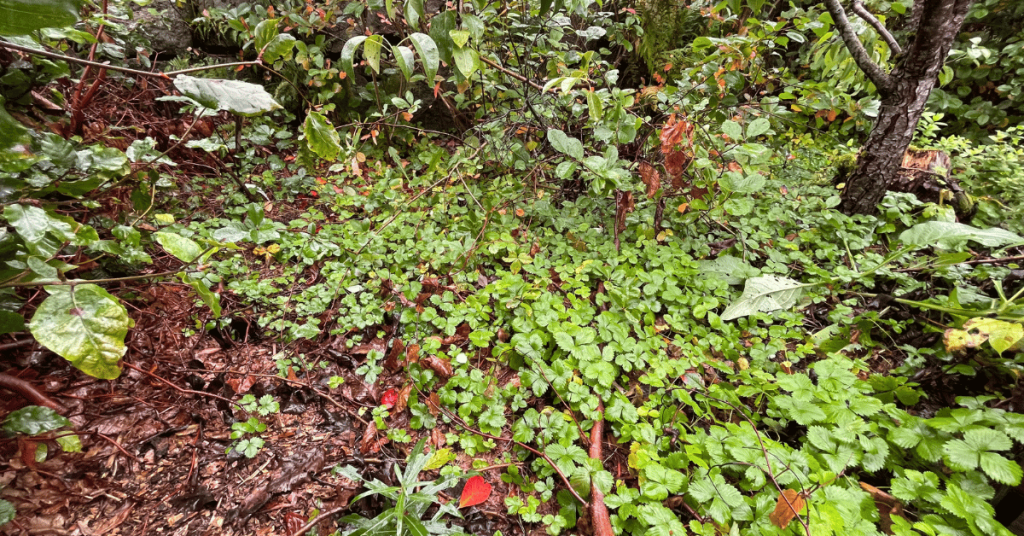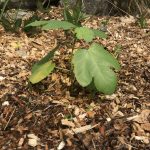Strawberries as Groundcover: A Sustainable and Aesthetic Choice

Gardening is not just about planting flowers or growing vegetables; it’s about creating a harmonious environment that is both functional and beautiful. One of the underrated components of this environment is groundcover. While traditional choices like grass are common, innovative gardeners are turning to strawberries for a sustainable and aesthetic alternative.
Benefits of Using Strawberries as Groundcover
- Soil Retention: Strawberry plants have intricate root systems that hold the soil together, preventing erosion.
- Biodiversity: Attracting a range of pollinators, strawberries enhance the overall biodiversity of your garden.
- Aesthetic Appeal: The vibrant green leaves, coupled with red berries, provide a visual treat.
- Eco-friendly: Unlike grass, strawberries require minimal water and thrive without chemical fertilizers.
- Edible Rewards: Apart from serving as groundcover, you get the added benefit of delicious home-grown strawberries.
[Image: Illustration of a cross-section of soil highlighting strawberry roots.]
Soil Retention
One of the most significant advantages of using strawberries as groundcover is their ability to retain soil effectively. The intricate root systems of strawberry plants form a complex network that binds the soil together. This prevents soil erosion, especially in areas prone to heavy rainfall or runoff, making strawberries an eco-friendly alternative to traditional groundcover options.
Biodiversity
Strawberries serve as more than just an aesthetic groundcover; they also contribute to the garden’s biodiversity. The flowers of strawberry plants attract a variety of pollinators, from bees to butterflies, enhancing the ecological balance of your garden. This is particularly beneficial for gardeners who aim to create a more sustainable and wildlife-friendly environment.
Aesthetic Appeal
The visual benefits of using strawberries as groundcover cannot be overstated. The combination of vibrant green leaves and bright red berries creates a visually pleasing landscape. This adds an element of beauty to your garden while also providing the practical benefits of groundcover.
Eco-friendly
Strawberries are an eco-friendly groundcover option for several reasons. They require minimal water compared to traditional lawn grass, making them a more sustainable choice in areas where water conservation is a concern. Additionally, strawberries can thrive without the need for chemical fertilizers, aligning with eco-friendly gardening practices.
Edible Rewards
Last but not least, one of the most appealing aspects of using strawberries as groundcover is the edible rewards they offer. As the plants spread across the ground, they produce delicious, home-grown strawberries that you can enjoy fresh from the garden.
Nutritional Benefits
Apart from serving as groundcover, strawberries offer the added benefit of being a nutritious, home-grown fruit. They are rich in essential vitamins and minerals, contributing to a balanced diet. According to a scientific study by R. Joshi, horticultural crops like strawberries play a significant role in nutrient security, providing essential nutrients that are crucial for human health.
My Personal Experience: Strawberries as Effective Groundcover
I’ve opted for a unique approach to groundcover in my own garden. While many gardeners might choose grass or other traditional options, I’ve allowed strawberries to grow freely under some of my fruit trees.
Why Strawberries Work for Me
- Spreading Nature: Strawberries spread like weeds, and that’s precisely what I wanted. Their runners extend and take root easily, filling in gaps and creating a lush, green carpet.
- Climate Compatibility: Living in a USDA Zone 7 area, known for its wet climate, the strawberries have thrived, proving their adaptability and resilience.
- Weed Control: Contrary to some experiences, my strawberries have effectively outcompeted weeds. This is likely because I laid down a 10-15 cm layer of woodchips first, which generally keeps weeds at bay.
- Pet-Friendly: Our family dog enjoys the strawberries. They may be small, especially since I don’t remove the runners, but they’re a hit with our four-legged friend.

Additional Insights: Advantages and Disadvantages
While strawberries offer numerous benefits as groundcover, there are some points to consider:
- Berry Size: When used as groundcover, strawberries tend to produce smaller berries. However, these are still very tasty and can be a treat for smaller wildlife.
- Seasonal Production: Some strawberry varieties are labeled as “day neutral,” meaning they are supposed to produce berries all summer. However, they often produce heavily in June and lightly again in the fall.
Berry Size
When used as groundcover, strawberries often produce smaller berries compared to those grown in dedicated beds. While some may see this as a disadvantage, these smaller berries have their own set of benefits. Their size makes them easier for smaller wildlife to consume, contributing to the local ecosystem. Additionally, the smaller size does not compromise on flavor, offering a tasty treat right from your garden.
Seasonal Production
Strawberries used as groundcover may exhibit seasonal variations in their fruit production. Some varieties, labeled as “day neutral,” are supposed to produce berries throughout the summer. However, many gardeners find that these plants produce heavily in June and then again lightly in the fall. This seasonal pattern is worth considering when planning your garden, especially if you’re looking for a consistent yield throughout the growing season.
Weed Control: A Personal Note
While some experiences suggest that strawberries may not outcompete weeds effectively, my personal experience has been different. In my garden, strawberries have effectively kept weeds at bay. This success is likely due to the initial layer of 10-15 cm of woodchips I laid down, which generally inhibits weed growth. Therefore, effective weed control may be possible with some pre-emptive measures.
Thriving in Diverse Climates: USDA Zone 7 and Scandinavian Gardens
Strawberries are incredibly adaptable plants, capable of thriving in a range of climates. I reside in USDA Zone 7, where strawberries flourish under tall trees, providing an excellent groundcover option for gardens with varying light conditions. To the best of my knowledge, strawberries can be successfully grown as perennials in USDA zones 5 through 8. This adaptability extends to Scandinavian climates as well, where strawberries can thrive alongside native, non-invasive species, further showcasing their resilience.
The Ecosystem’s Ally: How Strawberries Benefit Soil and Surrounding Plants
Strawberries play a vital role in enhancing the local ecosystem:
- Soil Enrichment: Their roots aerate the soil, improving its quality and structure.
- Prevention of Soil Erosion: As mentioned, the dense root network of strawberries holds the soil together, ensuring it remains intact even during heavy rains.
- Companion Planting: Strawberries can be paired with various plants, benefiting from mutual growth conditions.
Soil Enrichment
Strawberries contribute significantly to soil health. Their root systems not only hold the soil together but also aerate it as they grow. This aeration improves soil structure, making it more hospitable for other plants and beneficial microorganisms. Over time, this can lead to richer, more fertile soil, reducing the need for synthetic fertilizers.
Prevention of Soil Erosion
As previously mentioned, the dense root network of strawberries serves as an effective barrier against soil erosion. This is particularly beneficial in areas susceptible to heavy rains or strong winds. By holding the soil in place, strawberries mitigate the risks of soil degradation and loss, preserving the integrity of your garden landscape.
Companion Planting
Strawberries are highly compatible with a variety of other plants, making them ideal candidates for companion planting. For example, they can be planted alongside vegetables like spinach and herbs like thyme, benefiting from mutual growth conditions. This symbiotic relationship not only maximizes space but also enhances soil nutrients, making it a win-win for all plants involved.
Conclusion: The Future of Groundcover
Strawberries as groundcover is more than just a gardening trend; it’s a testament to the evolving nature of horticulture. Embracing strawberries is not only a nod to aesthetics and taste but also a commitment to sustainability and eco-friendliness. As gardeners, our choices shape the environment, and opting for strawberries is a step towards a greener future.
Explore More: Raised Bed Gardening for Strawberries
If you found this article on using strawberries as groundcover intriguing, you might also be interested in exploring other innovative ways to grow strawberries. Check out our article on Raised Bed Gardening: The Perfect Solution for Growing Strawberries to learn how raised beds can offer an excellent environment for strawberry cultivation, especially if you’re dealing with challenging soil conditions.
Dive deeper into the world of sustainable and eco-friendly gardening practices with us. Your next gardening adventure awaits!
Expand Your Knowledge on Scandinavian Fruits and Berries
If you’re captivated by the idea of using strawberries as a sustainable and aesthetic groundcover, you’ll find immense value in our Top 10 Berries and Fruits for Scandinavian Gardens: A Comprehensive Guide.
This guide serves as a treasure trove of information for those looking to diversify their Scandinavian gardens with fruits and berries that are not only beautiful but also eco-friendly.
Reasons to Explore the Comprehensive Guide:
- Complementary Choices: Learn about other fruits and berries that can be grown alongside strawberries for a more diverse and vibrant garden.
- Sustainability Practices: Gain insights into sustainable gardening techniques that align with your eco-friendly approach to groundcover.
- Cultivation Tips: Acquire expert advice on how to cultivate a variety of fruits and berries successfully, enhancing your garden’s productivity and aesthetic appeal.




